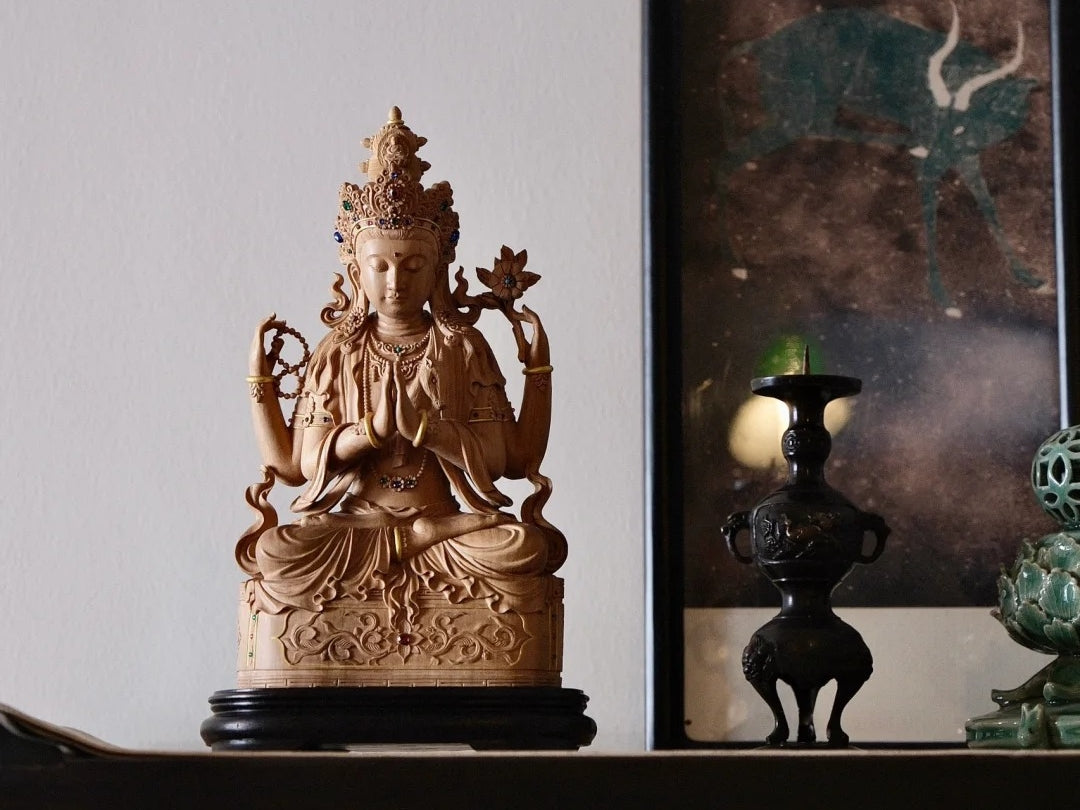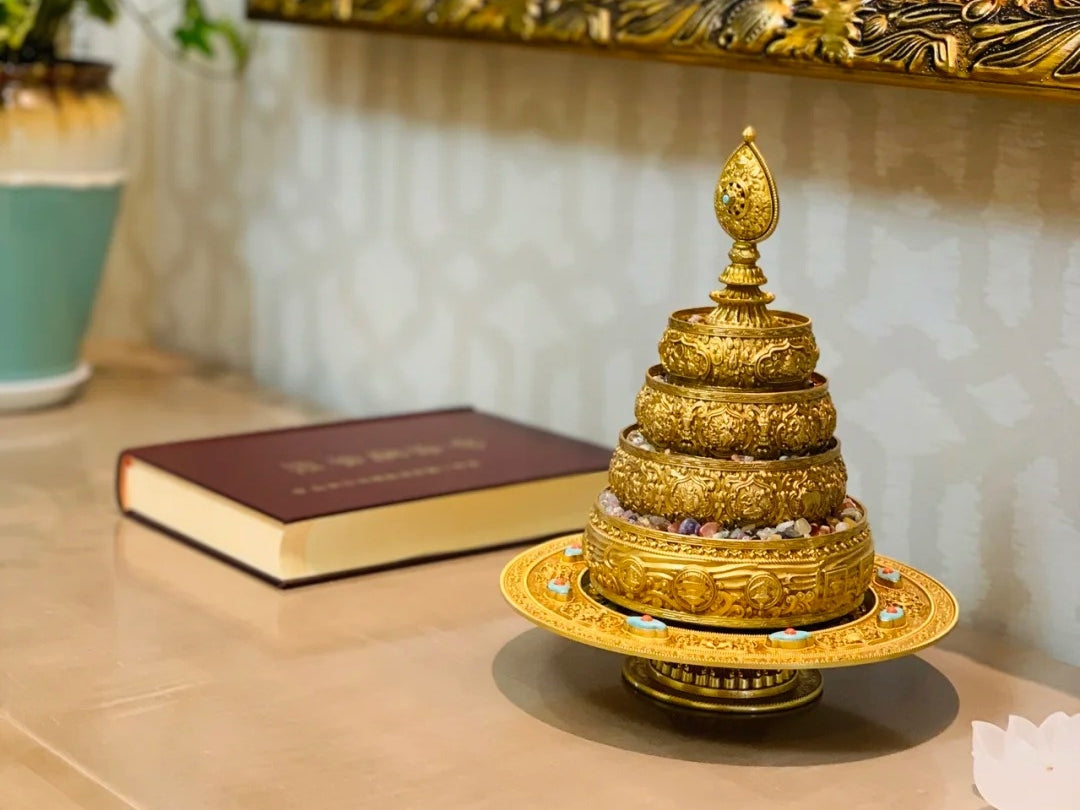Tibetan Thangka paintings are renowned for their vibrant colors, intricate details, and most of all, their mathematical precision. At the heart of each Thangka lies a mandala—a circular diagram that represents the universe and the path to enlightenment. In this article, we’ll explore the Thangka geometry that gives these sacred artworks their harmonious structure, and how those same principles inspire mandala jewelry—from pendants to bracelets—that carry Tibetan balance symbols into everyday wear.

The Universal Circle: Understanding the Mandala’s Structure
A mandala, which means “circle” in Sanskrit, reflects the Buddhist idea that life is cyclical and interconnected. Traditional Thangka artists begin by drawing concentric circles, each divided by precise angles and radii.
-
Central Point (Bindu): Every mandala starts with a single point—the bindu—which symbolizes the origin of creation or the Buddha’s enlightened mind.
-
Concentric Rings: Surrounding the bindu are rings that denote layers of reality, from the physical world to spiritual planes. These rings are often partitioned into 8 or 16 equal sectors, creating radial symmetry.
-
Square and Lotus Framework: Many Thangkas use a square—known as the “cosmic palace”—inscribed within the circles. Lotus petals frame this square, their count (often 16 or 32) chosen to align with astrological and spiritual correspondences.
This blend of circles, angles, and squares isn’t arbitrary; it follows precise geometric rules passed down through monastic lineages. The result is a design that feels naturally balanced, drawing the viewer’s eye inward toward meditation and contemplation.

Translating Geometry into Jewelry
At QiLing Aura, we love how Tibetan balance symbols can become wearable art. By adapting mandala architecture into small-scale jewelry pieces, designers create mandala jewelry that resonates with the same sense of harmony found in Thangka paintings.
Symbolism Woven into Every Angle
Every geometric choice in a Thangka—or a piece of jewelry—carries meaning:
-
Eightfold Division: Dividing circles into eight sections references the Eight Auspicious Symbols and the Eightfold Path, reminding wearers of compassion, wisdom, and ethical conduct.
-
Square within a Circle: The cosmic palace—a square inside the mandala—marks the boundary between the mundane and the divine, suggesting that true balance lies in harmonizing both realms.
-
Lotus Petals: The lotus count expresses stages of spiritual awakening; wearing a lotus-framed pendant invites growth from the “mud” of daily stress into the clarity of mindful living.
When you choose mandala-inspired jewelry, you’re embracing these Tibetan balance symbols—not through decoration alone, but through sacred geometry that has guided practitioners for over a thousand years.
Bringing Sacred Geometry into Daily Life
Wearing mandala jewelry is more than an aesthetic choice; it’s a subtle mindfulness practice. Here’s how to make the most of it:
-
Morning Connection: Slip on a mandala pendant as part of your morning routine. Pause to trace its circles, setting an intention for balance in your day.
-
Mindful Movement: If your ring has a rotating halo, use it as a tactile anchor during stressful moments—let your finger follow the path, reminding you of inner calm.
-
Evening Reflection: Place your earrings or charms on a small altar or jewelry dish as a visual cue for gratitude and rest.
At QiLing Aura, our curated collection of Thangka-inspired jewelry honors the sacred architecture of Tibetan mandalas. Each piece is handcrafted to reflect the precision of ancient Thangka geometry, bringing spiritual harmony and timeless design into your life.




